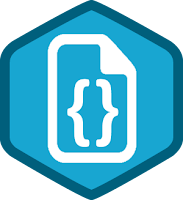As intuitive as an API might seem to be in the minds of it's creators, consumers tend to have a different opinion. This where good documentation which facilitates discovery comes into it's own. Swagger and Swashbuckle makes this significantly easier.
Swagger describes, consumes and visualises RESTful APIs. It makes sure the documentation and code stay in sync.
Swashbuckle significantly simplifies adding Swagger to a WebApi project. It has no dependencies and comes with swagger-ui built-in.
Step 1: Create your project and install SwashBuckle from NuGet
In the package manager console:
PM> Install-Package Swashbuckle.AspNetCore
|
Step 2: Generate documentation from the XML comments in code
Use standard XML comments to document the Controllers and Entities that are exposed by the controller interfaces. As long as the comments are of a sufficiently high standard, this leads to a "self-documenting" API.
In Visual Studio go to Project Properties > Build > Output, check 'Xml documentation file'
Step 3: Configure the Swagger documentation
In Startup.cs
a. Add using Swashbuckle.AspNetCore.Swagger;
b. In Startup.cs > ConfigureServices() add
services.AddSwaggerGen(c =>
{
c.SwaggerDoc("v1", new Info { Title = "Your API Name", Version = "v1" });
c.IncludeXmlComments(string.Format(@"{0}\YourProjectName.xml", System.AppDomain.CurrentDomain.BaseDirectory));
});
|
Step 4: Enable the Swagger UI
In Startup.cs > Configure() add
app.UseSwagger(); // generates the swagger.json file
app.UseSwaggerUI(c =>
{ c.SwaggerEndpoint("/swagger/v1/swagger.json", "Your API Name V1"); }); // shows swagger ui |
Step 5: Review the generated documentation
In Visual Studio go to Project Properties > Debug, set the 'Launch URL' to "swagger".






Comments
Post a Comment